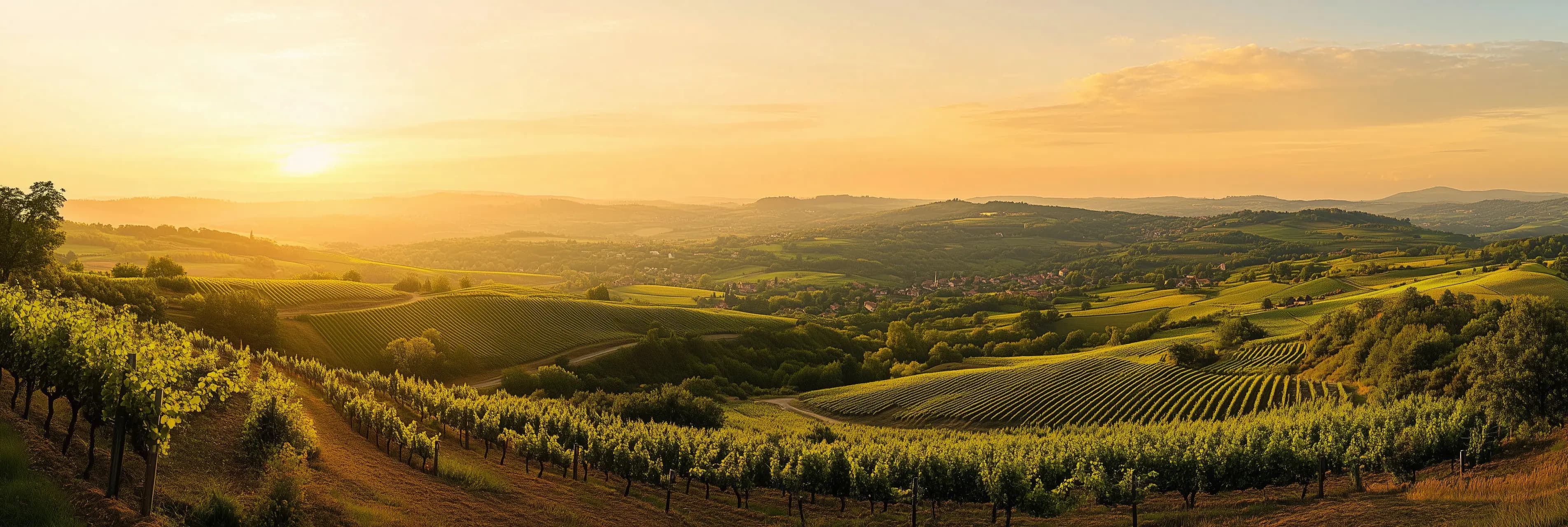What grape is Beaujolais?
If you’ve ever wondered, “What grape is Beaujolais?”, the answer is clear: Gamay.
This red grape is the beating heart of the Beaujolais region, giving its wines their characteristic lightness, freshness, and vibrant fruit flavors.
But there’s more to this connection than meets the eye...
Gamay: the signature grape of Beaujolais
Gamay, officially known as Gamay Noir à Jus Blanc, is a grape with a long and storied history.
Originating in Burgundy, it was first cultivated in the Middle Ages.
However, in 1395, the Duke of Burgundy famously banned Gamay from his lands, favoring the “nobler” Pinot Noir. This decision pushed Gamay south to Beaujolais, where it found its perfect home.
Beaujolais provided everything Gamay needed to thrive: granite-rich soils, sloping vineyards, and a moderate climate. Over time, the grape became synonymous with the region, shaping its identity and defining its wines.
The characteristics of Gamay in Beaujolais
Gamay is celebrated for its vibrant personality, which shines through in the wines of Beaujolais. These wines are typically:
- Fruit-forward, with red berry flavors like cherry, raspberry, and strawberry ;
- Floral, often with hints of violets and wildflowers ;
- Fresh and approachable, with bright acidity and soft tannins.
While Gamay is generally known for its light and easy-drinking style, in certain parts of Beaujolais—particularly the crus—it can produce wines with surprising depth, structure, and aging potential.
Why Gamay thrives in Beaujolais
The success of Gamay in Beaujolais is no accident. The region’s terroir is uniquely suited to this variety:
- Granite Soils: These rocky soils, particularly in the northern Beaujolais crus, give the wines minerality and complexity.
- Rolling Hills and Slopes: Vineyards benefit from excellent sunlight exposure and natural drainage, which are essential for ripening Gamay.
- Mild Climate: Beaujolais enjoys warm summers and relatively mild winters, ensuring consistent grape quality year after year.
Beaujolais Styles: the many faces of Gamay
Gamay is incredibly versatile, and Beaujolais wines come in a variety of styles to suit every occasion.
- Beaujolais Nouveau: A fun, youthful wine that is released just weeks after harvest. Known for its lively fruitiness, it’s the perfect introduction to Gamay.
- Beaujolais Villages: Offering more complexity than Nouveau, these wines strike a balance between freshness and depth, making them ideal for casual meals.
- Beaujolais Crus: The pinnacle of the region, these ten crus showcase Gamay at its finest. From the elegant and floral wines of Fleurie to the robust, age-worthy bottles of Moulin-à-Vent, the crus reveal the full potential of this grape.
Gamay beyond Beaujolais
Although Gamay’s spiritual home is in Beaujolais, its appeal has spread beyond the region.
You’ll find small plantings in other parts of France and even as far afield as Canada and New Zealand.
However, no place captures the essence of Gamay quite like Beaujolais, where tradition and terroir come together in perfect harmony.
So, what grape is Beaujolais? The answer is Gamay—a grape that embodies the charm, versatility, and vibrancy of the region.
Whether you’re sipping on a chilled glass of Beaujolais Nouveau or savoring a more structured Beaujolais cru, you’re tasting the story of Gamay and its centuries-old bond with this unique corner of France.
It’s more than just a grape—it’s the soul of Beaujolais.

